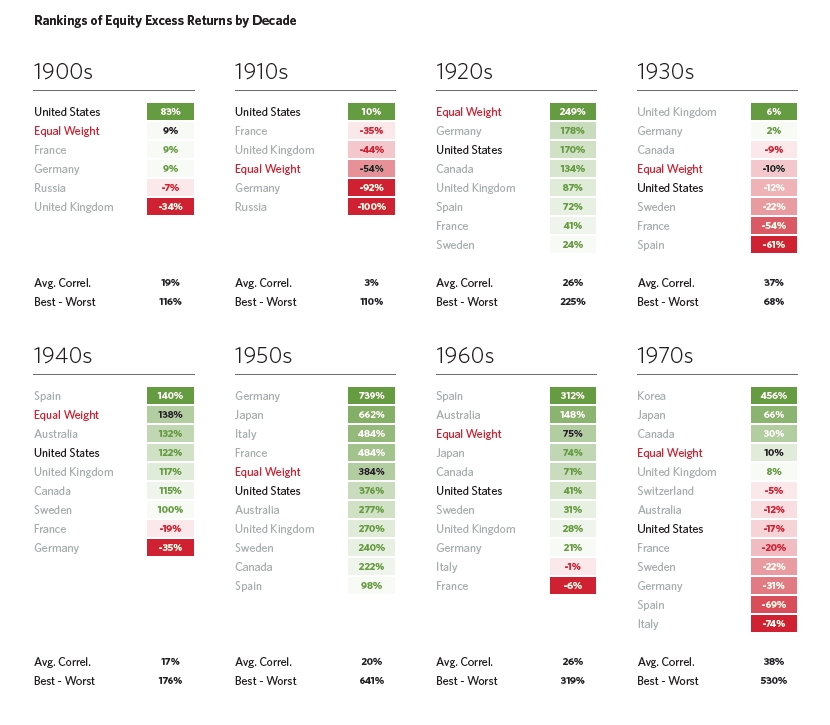Which U.S. Military Aircraft Can Fly Nearly 14,000 Miles Before Refueling?
Have you ever heard of the term air superiority? Air superiority, also known as air supremacy, is how much power one specific nation or military holds in the airspace against enemies or opposing forces. Having air superiority not only means having the upper hand in aerial warfare, but having the ability to project power across […] The post Which U.S. Military Aircraft Can Fly Nearly 14,000 Miles Before Refueling? appeared first on 24/7 Wall St..
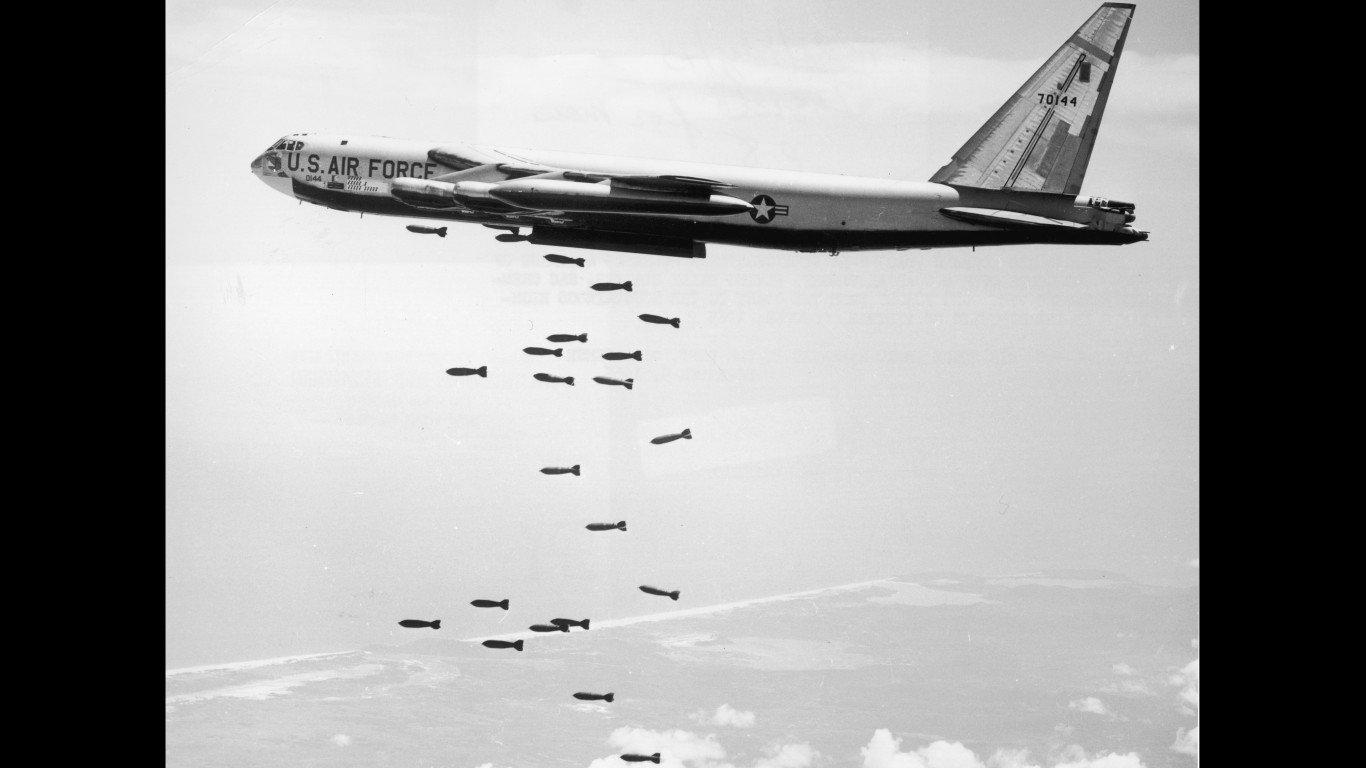
Have you ever heard of the term air superiority? Air superiority, also known as air supremacy, is how much power one specific nation or military holds in the airspace against enemies or opposing forces. Having air superiority not only means having the upper hand in aerial warfare, but having the ability to project power across long distances. The United States is currently attempting to solidify its air superiority against other global powers like China through the development of the F-47; the U.S. Air Force describes the F-47 as “the world’s first sixth-generation fighter aircraft.” Boeing will lead the aircraft’s development. The F-47 will have a modular design and will integrate sensor fusion, long-range strike capabilities, and next-generation stealth technology. According to U.S. Secretary of Defense Pete Hegseth, the F-47 shows U.S. allies that we are capable of power and warns enemies of our abilities in times of conflict. (Compare the oldest and newest fighter jets in modern air forces.)
Part of the ability to project power and earn air supremacy is range — aircraft must be able to travel for long ranges without refueling, providing more support to troops in combat situations that are farther away. Here, 24/7 Wall St. took a look at the U.S. military aircraft with the longest operational ranges. To do so, we used a variety of sources including aircraft range rankings from Military Firepower, fact sheets from the U.S. Air Force and U.S. Navy, and articles from The Defense Post, U.S. Strategic Command, and more. We listed these aircraft in ascending order from lowest to highest range. We excluded any aircraft that have been retired from service, but did include aircraft that will soon enter service.
This previously published article was updated on April 17, 2025 to highlight the U.S. military’s attempts to gain air superiority and how that has been perceived throughout the world.
Why Is Air Power Projection Important?
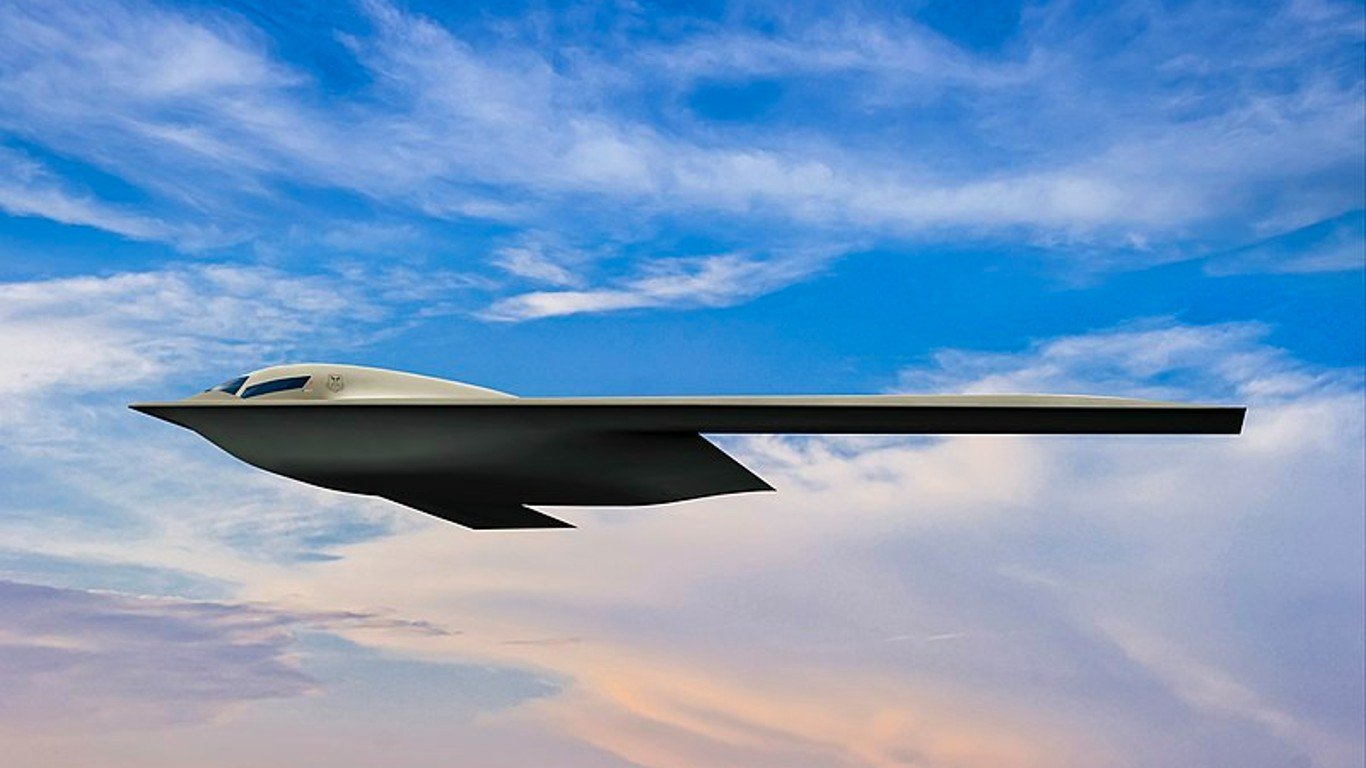
It’s strategically important for the United States to be able to project air power over long distances. This lets the military defeat adversaries with overwhelming force without having to cross other countries’ territories and difficult terrain by land. This means we don’t have to maintain as many overseas military bases, get permission from countries to cross their territory, or lose the element of surprise. But while the U.S. seems to be excited about the F-47, is this enough to earn air supremacy? Admiral Samuel J. Paparo, the head of U.S. Indo-Pacific Command, reported to the U.S. Senate that China was also developing several intercept missiles and stealth fighters that could make it impossible for either China or the U.S. to maintain supremacy. Whether that’s true is yet to be seen.
Check out the U.S. military aircraft with the longest ranges:
11. B-2 Spirit
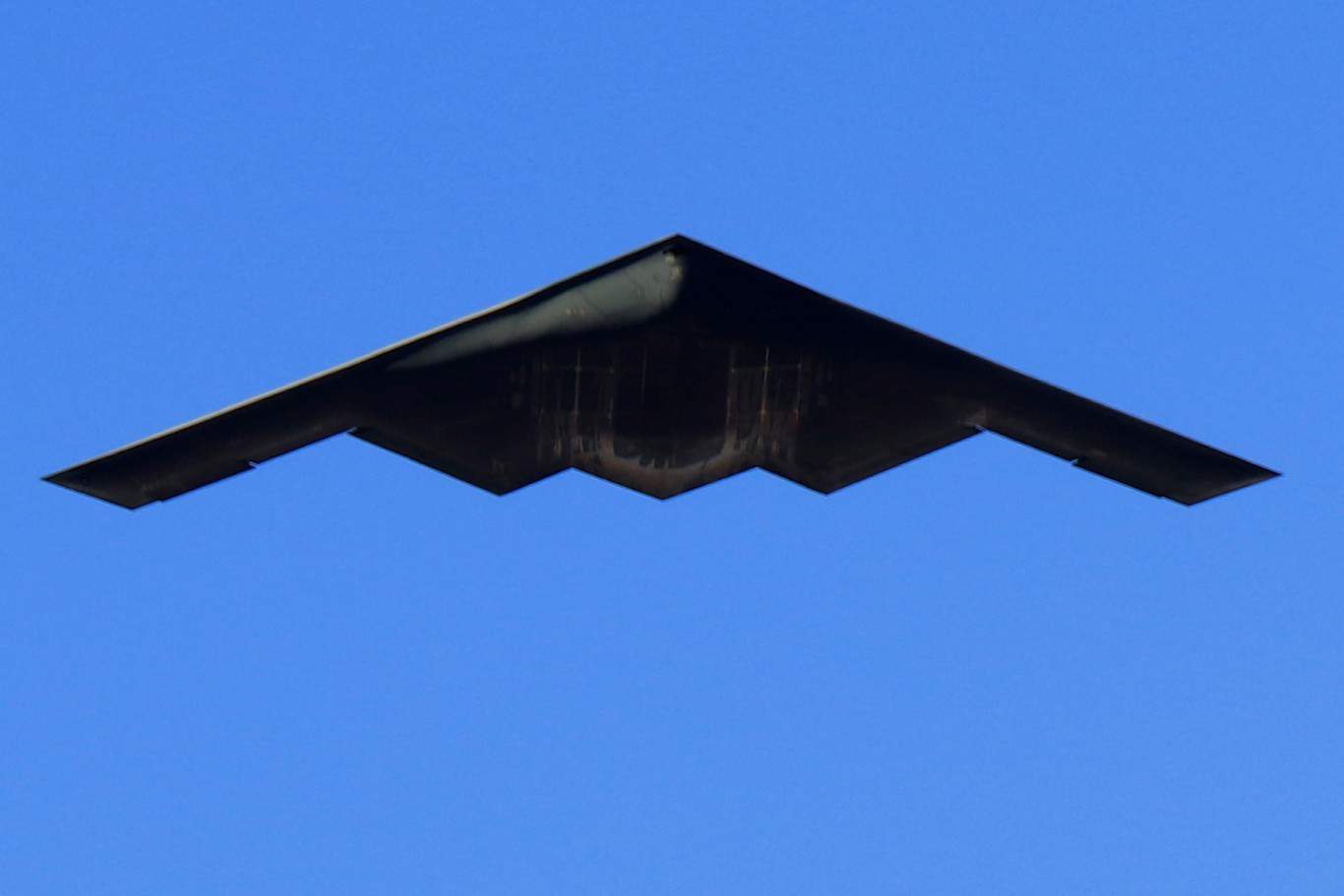
This heavy stealth bomber has a range of 6,000 nautical miles but can go up to 10,000 with one refueling. The B-2 Spirit is capable of delivering both conventional and nuclear munitions, bypassing the most advanced enemy defenses to take out heavily defended targets. Its surface is made of composite materials to reduce its electromagnetic, infrared, and radar signatures, making it virtually “invisible” to detection. This aircraft has a crew of 2 pilots and can reach altitudes of 50,000 feet.
10. B-1 Lancer
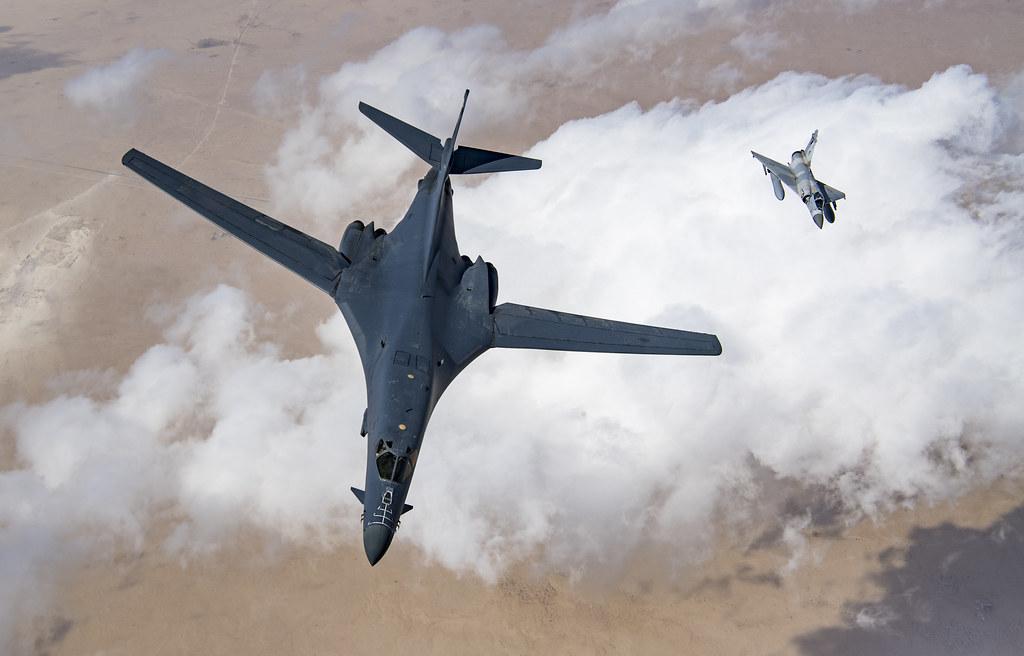
The U.S. Air Force currently operates 45 of these supersonic warplanes, which have an operational range of 7,456 miles. The mission of the Lancer is as a long-range heavy bomber carrying the largest payloads of conventional weapons in the Air Force inventory. Among other things, it is able to track, target, and engage moving vehicles. The B-1 Lancer has seen several combat scenarios, including Iraq (Operation Desert Fox, 1998), Kosovo (1999), Afghanistan (2001), and Iraq (2003).
9. KC-46 Pegasus
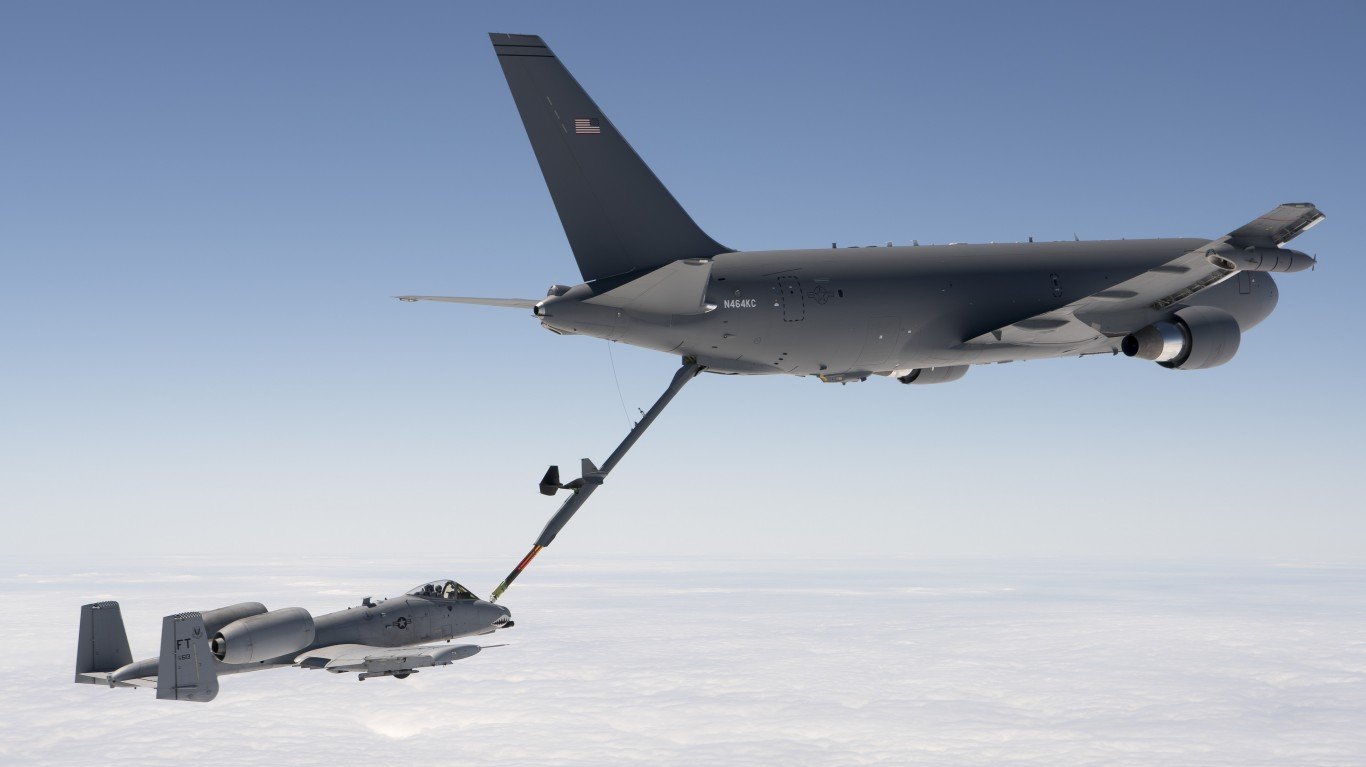
Approximately 89 KC-46 Pegasus aircraft are currently in service. These planes have a range of 7,581 miles and serve as cargo and troop transports and as tankers for mid-air refueling. Equipped as a tanker, the KC-46 has a fuel capacity of 212,000 pounds. For comparison, the B-2 Spirit has a fuel capacity of 167,000 pounds and a full fuel load for the B-52 Stratofortress is 312,197 pounds.
8. E-6 Mercury
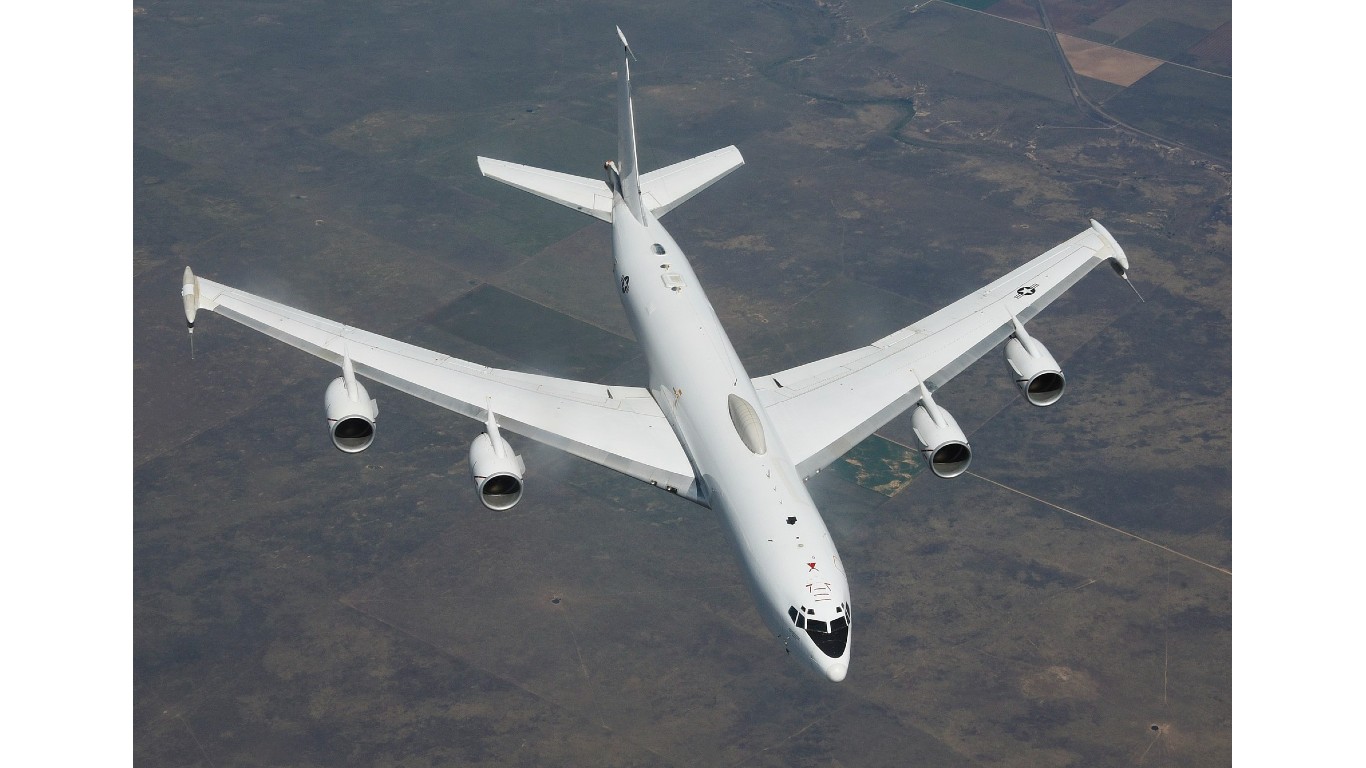
The E-6 Mercury is a U.S. Navy aircraft, with 16 actively in service. The purpose of these aircraft is to provide airborne command posts and communications relays for the military in the event of a national crisis. For example, in a nuclear conflict they would connect the president or other acting authority to the U.S. Navy ballistic submarine fleet to order nuclear missile launches. The range of the E-6 Mercury is 7,519 miles. It has been actively serving since 1989.
7. RAPCON-X
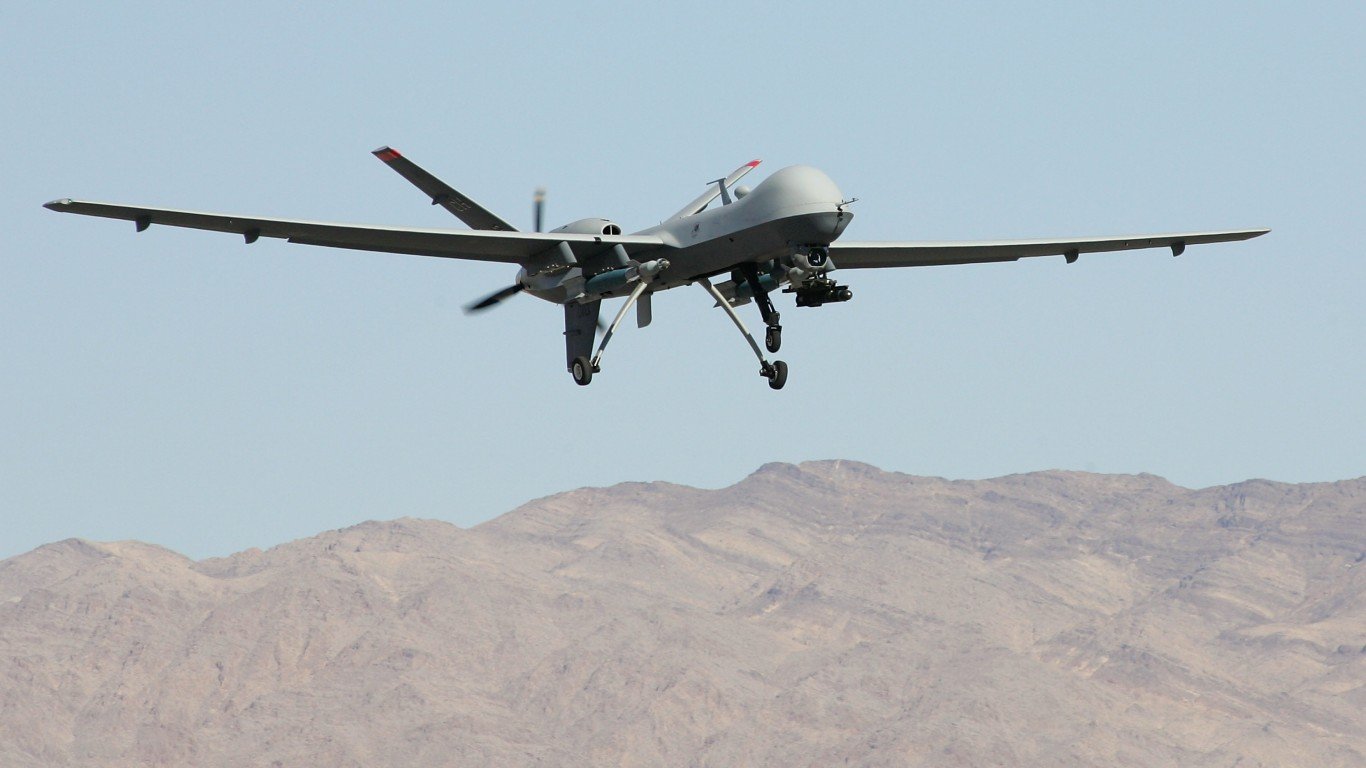
The Sierra Nevada Corporation proposed RAPCON-X as an option for the U.S. Air Force. This Intelligence-Surveillance-Reconnaissance (ISR) special-mission aircraft allows for the rapid reconfiguration of defense systems for new operations, and supports signals intelligence, electro-optical surveillance, and ground moving-target tracking. The aircraft, which has a maximum operational range of 7,596 miles, took its inaugural flight in November 2024.
6. EA-37B Compass Call
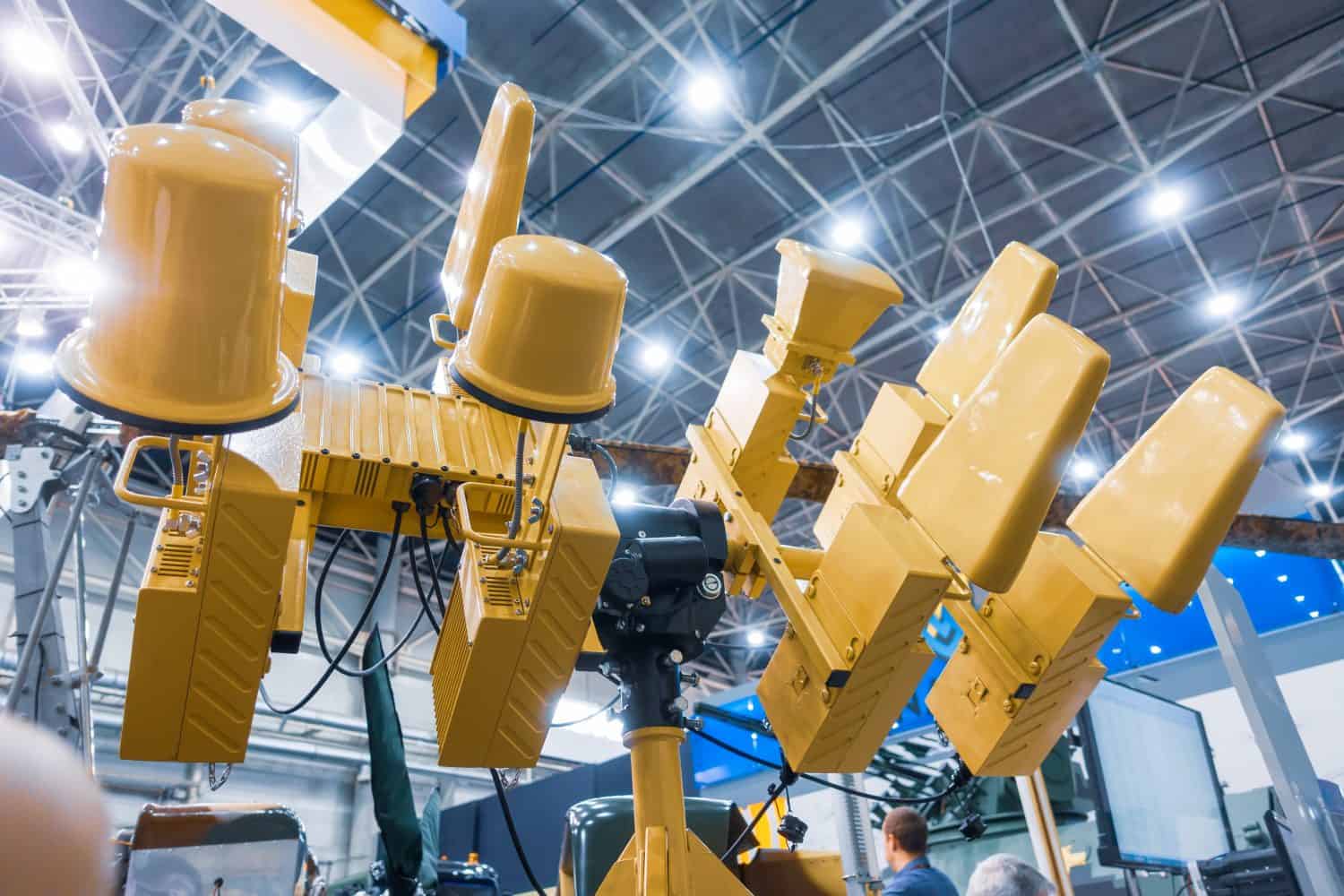
Developed by BAe Systems, the EA-37B is an electronic warfare aircraft that U.S. Air Force pilots began training with in 2024. These innovative aircraft have an operational range of 7,767 miles and can fly at an impressive 652 miles per hour. The EA-37B was initially called the EC-37B to reflect its Electronic Attack positioning. Given its upgraded technology, the EA-37B will play a crucial role in disrupting enemy communications, processing information, and deploying offensive counter-information and electromagnetic attack capabilities.
5. Air Force One (Boeing VC-25)
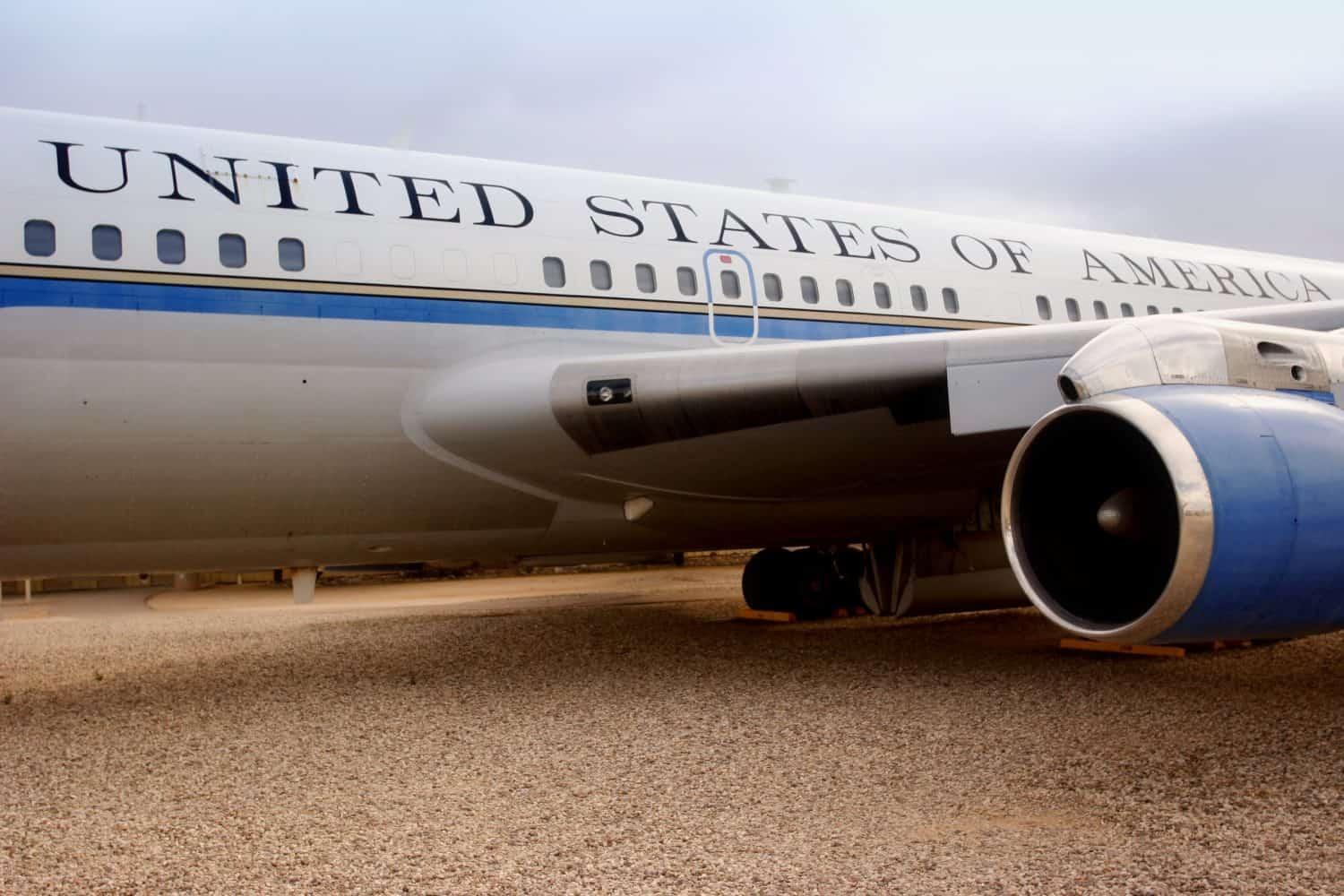
Air Force One is the presidential transport aircraft. This aircraft is equipped for security and communications so it can function as a full-fledged presidential office: a “flying White House,” if we may. It can fly a distance of 7,800 miles without refueling. However, Air Force One can actually be refueled during flight, which can extend its range. Air Force One also has a conference and dining room, medical equipment and supplies, and an executive stateroom on board.
4. LMXT (KC-Y Bridge Tanker)
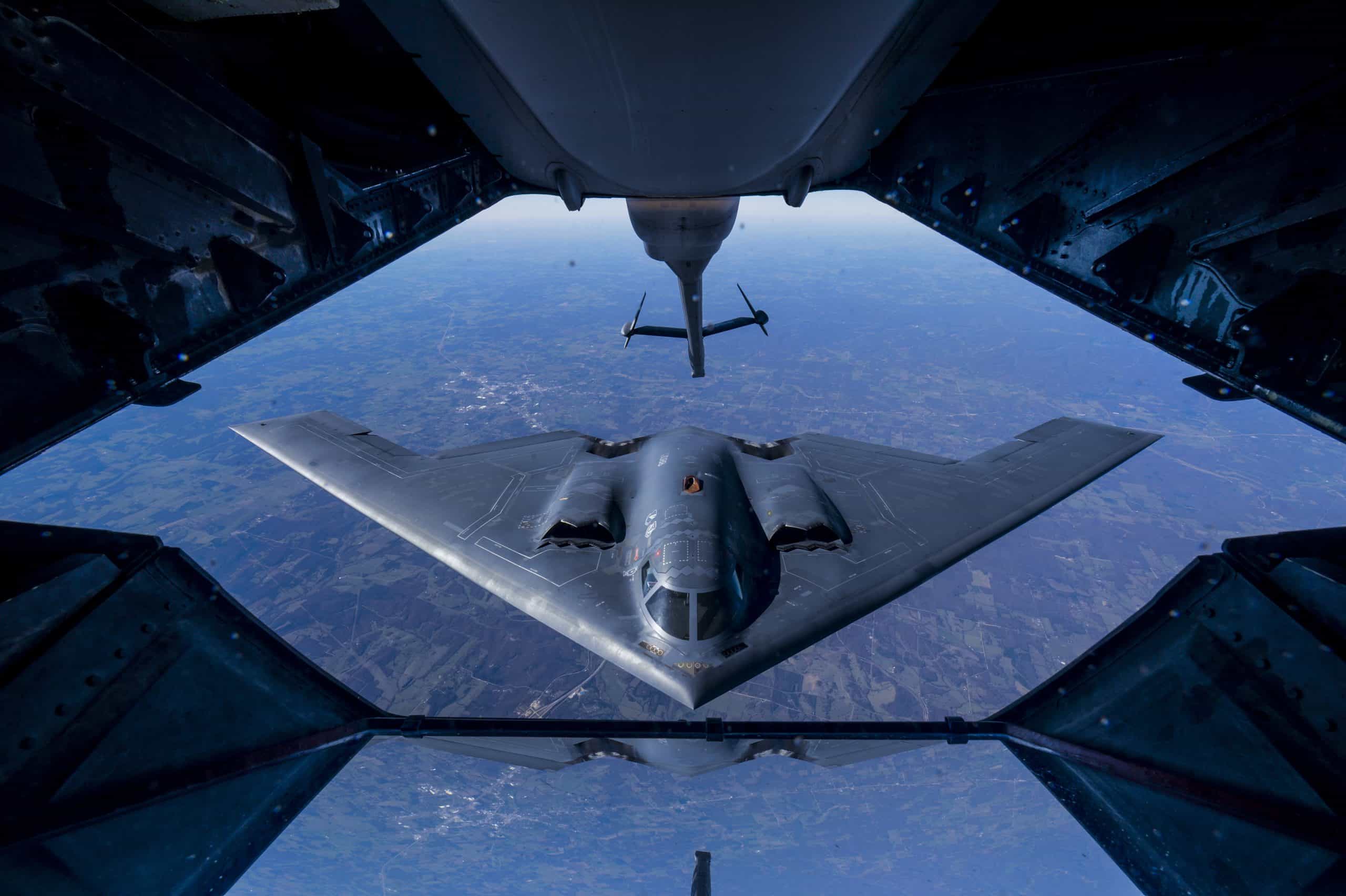
Okay, so the LMXT (KC-Y Bridge Tanker) has actually not been developed yet, but is slated for delivery in 2029 or 2030. This aerial refueling tanker aircraft will be developed by Lockheed Martin, with a goal of meeting the U.S. Air Force’s need for the standing KC-Y “Bridge Tanker” requirement. The LMXT, which should have an operational range of 9,196 miles, would be capable of refueling all current U.S. Air Force aircraft including F-22 and F-15 air superiority fighters, F-35A strike fighters, F-16 lightweight fighters, B-1 strategic bombers, C-17 heavy airlifters, and E-3/E-7/P-8 special-mission platforms.
3. MQ-4C Triton
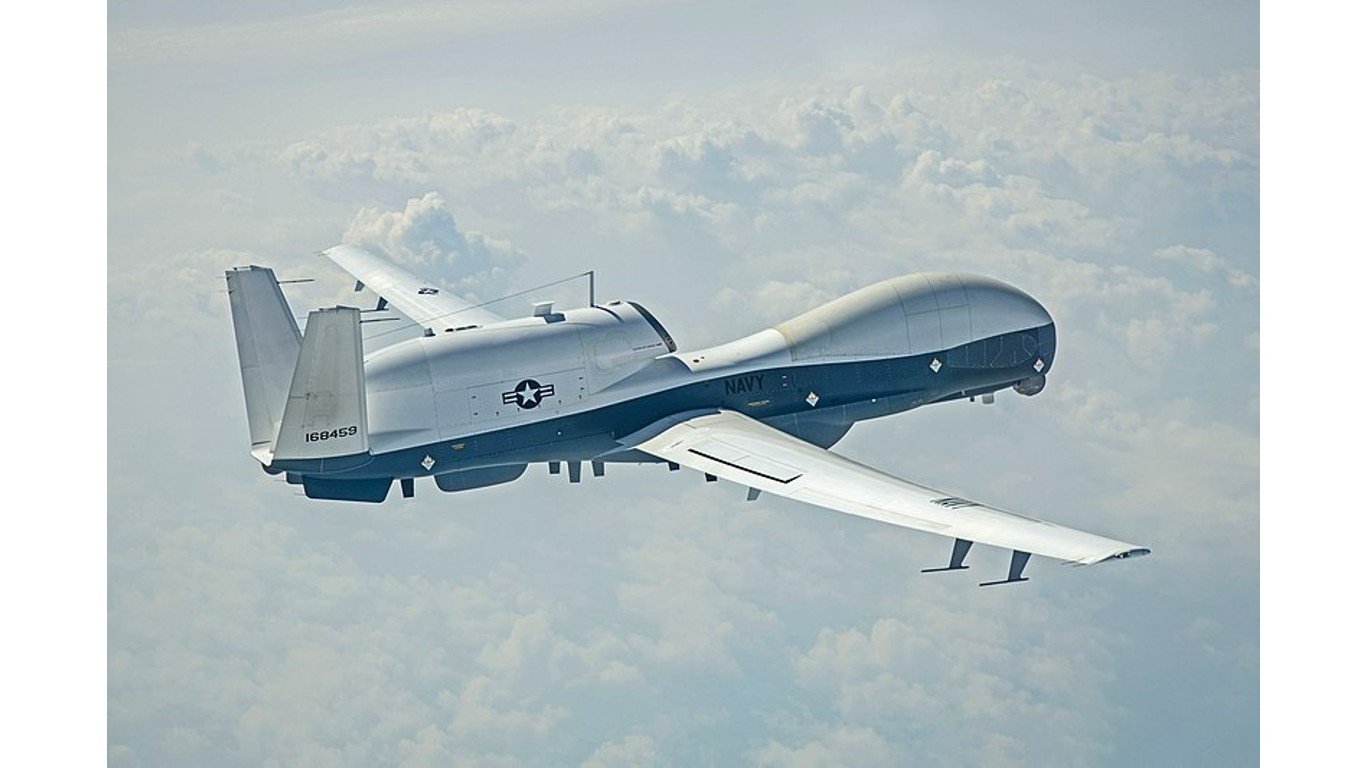
The MQ-4C Triton, an unmanned aerial vehicle (UAV), has a range of 9,436 miles. This aircraft is similar in design to the RQ-4 Global Hawk, but a “navalized” version — that is, the MQ-4C Triton is designed for maritime surveillance and reconnaissance. Reaching ceilings of over 60,000 feet, this Northrup Grumman UAV could play a role in addressing instability and conflict in Asia.
2. B-52 Stratofortress
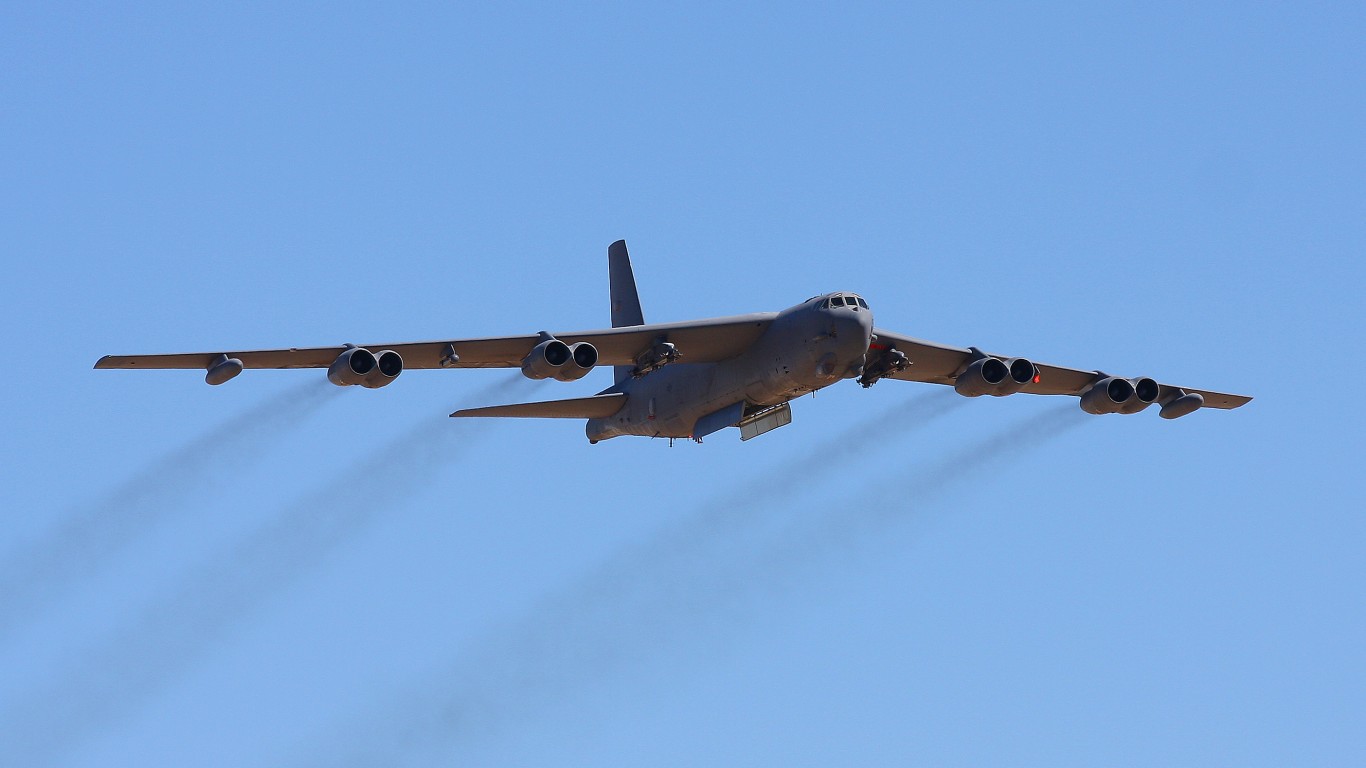
The B-52 Stratofortress is perhaps the most successful air asset the military has ever constructed. It has been in service since 1955 and continues to be an important part of the country’s strategic planning. It flies up to 50,000 feet high, has a range of 10,088 miles, and can carry conventional or nuclear payloads. Reaching nearly 600 miles per hour in speed, the B-52 Stratofortress has played an essential role in Operation Desert Strike (1996), Operation Enduring Freedom (2001), and Operation Iraqi Freedom (2003).
1. RQ-4 Global Hawk
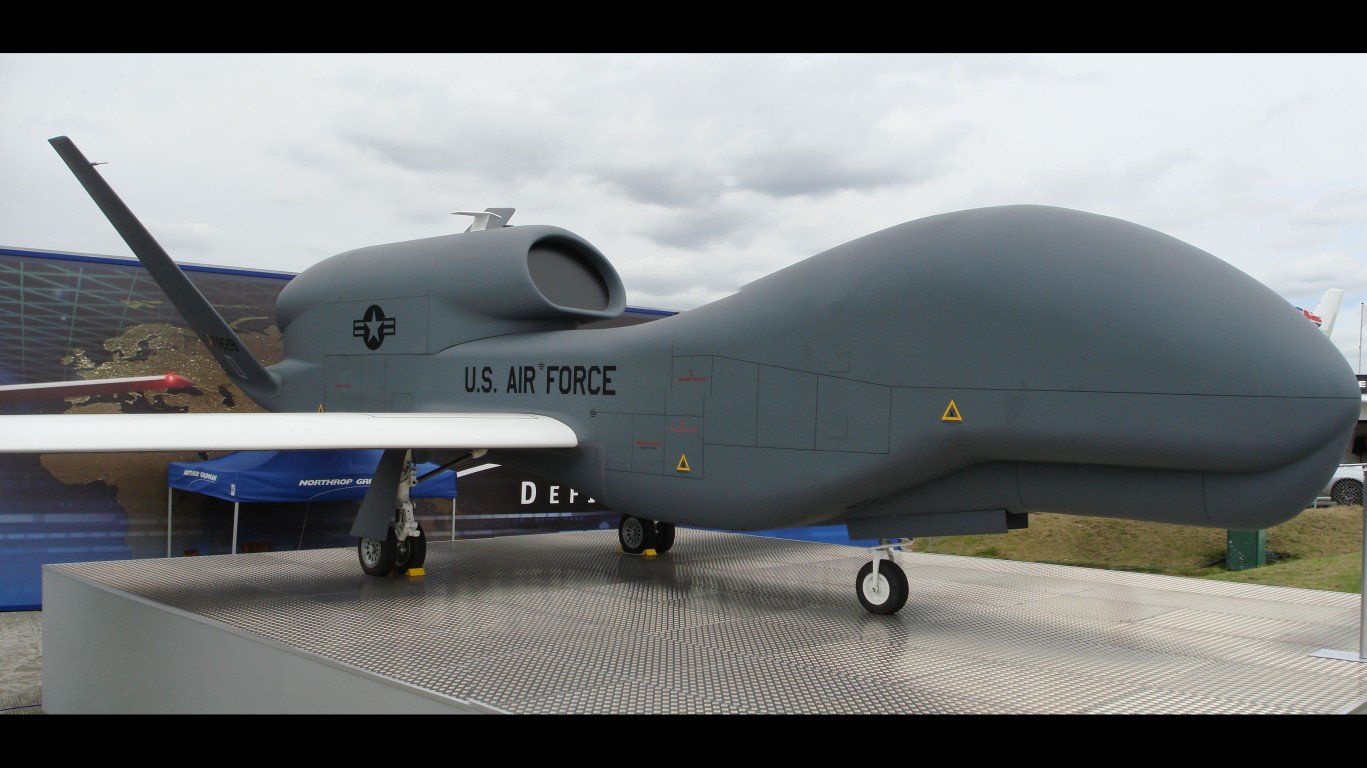
First introduced in 2001, the RQ-4 Global Hawk, developed by Northrup Grummon for the U.S. Air Force and U.S. Navy, is a large-scale Unmanned Aerial Vehicle (UAV) with with an operational range of 13,809 miles. These UAVs are designed to perform in all weather at high altitudes, with a ceiling of 60,000 feet. RQ-4 Global Hawk UAVs can loiter over areas for extended time to gather intelligence about enemy activities. The RQ-4 Global Hawk has seen use in several scenarios, including supporting combat missions in Operations Enduring Freedom and Iraqi Freedom/ New Dawn, Operation Odyssey Dawn in Libya, and humanitarian relief efforts during Operation Tomodachi in Japan. As it stands right now, the Air Force plans to retire the RQ-4 Global Hawk in 2027.
The post Which U.S. Military Aircraft Can Fly Nearly 14,000 Miles Before Refueling? appeared first on 24/7 Wall St..











































































